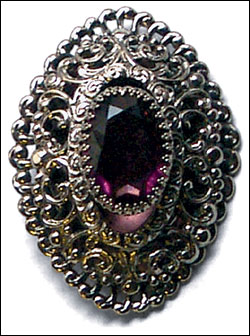Some like their goods spanking shiny and new, unbesmirched by the smudgy fingerprints of time and history. Others live for the bargain, the find, the getthat thing buried beneath piles of useless junk or lurking dusty and uncared for in a corner, quietly broadcasting its beauty and value to those whose ears and eyes are specially attuned. Mike McConnell, a Seattle furniture designer, vintage-modern dealer, and former Pine Street shopkeeper, lives on that frequency, and he’s willing to pass along a few tips to those who have not yet learned to decipher the dog-pitched signals.
What should you look for in the newspaper ads for estate sales? Any key words or phrases?
The seller should have heightened expectations but veer just short of pleading the qualities of their merchandise. “Collectibles” are usually things that the dead collected, their reasons buried with them. They are usually not things the living could find a rationale to hoardAvon bottles, repouss頰latters, the various treasures mailed monthly by the Franklin Mint. “Antiques” conventionally date before the 1920s; “midcentury”’40s, ’50s, ’60s; “retro”’50s, ’60s, ’70s; and “vintage” is sort of loosely accounted. “House full” is tempting but deceptive. Often you’ll see “50 years of accumulated objects,” also tempting but loaded with wiggle room. The strategy is simple: Look for sales in affluent, old-money neighborhoods; look for informal wording; and look for a one-day sale.
How early should you get there?
Earlier than everyone elseso early people start calling you the angel of death. If you have advance knowledge of great merchandise, get there for an entry number an hour before they’re offered.
Is bargaining recommended?
Some of the best finds are those that hadn’t even seen the price gun. If it’s a big-ticket item, you’ll be asked to leave a bid. But keep in mind that dealers can only pay half to a third of the expected retail value, so you have an edge there.
What room do you head for first?
You can often guess the household prospects from the living room. If there’s not much to look at there, head for the dankest corner. That’s where the family has stashed the things they’ve long given up onthe oldest, sometimes coolest stuff.
How do you know when something dirty, dingy, or damaged is salvageable?
Any object that still obeys the physical properties of cohesion allowing it to remain an object is salvageable, with the exception of paper goods. Parts can be replaced if they cannot be polished or repaired, which is expensive, so you have to factor that into the price.
Any parting words?
Beware the elderly. They are perfidious and cunning. When it suits them, they pretend not to fully comprehend the concept of waiting in line, the sequential nature of numbers, or the meaning of “Sold” signs.








